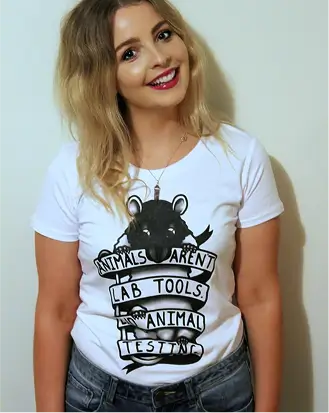Animal-Free Methods Often Outperform Animal Experimentation
This page is all about the positives—the incredible progress science has made and what’s now possible in research and testing without relying on animal experimentation.
The NZAVS team have created the Bright Future Report for you, showcasing the exciting possibilities and benefits of animal-free methods already available today.
In simple, layperson-friendly terms (no confusing science jargon!), you’ll learn about the computer models, chemical methods, and advanced biological systems paving the way to a kinder future. We compare animal-based testing with these innovative, human-relevant technologies and highlight the advantages of animal-free growth materials.
Learn about the exciting progress science has made!
Our Bright Future Report offers a snapshot of the many tools and models available today. The field of animal-free research, known as New Approach Methodologies (NAM), is constantly expanding, with new and exciting breakthroughs published all the time!

This graph was taken from a study¹ examining the number of published papers that include either animal-free research (NAMs), animal models, or both. You can see how significantly more papers focus exclusively on animal-free methods, showing the exciting progress toward kinder, cutting-edge approaches in science!
Examples of how Animal-Free Methods are outperforming animal models
Here are some of our favourite examples from the report that you can open here.
- Chemical methods are replacing animal use for toxin-testing! Like the HPLC test now used at Cawthron Institute in New Zealand to test for shellfish toxin instead of poisoning 50-100,00 mice per year.2
- Sophisticated computer models are predicting toxic effects with 89% accuracy where animal models reach 69% at best.3
- Laboratory tests on human skin and eye tissue are enabling researchers to identify skin and eye-irritating ingredients that were missed in rabbit models. They are also correctly marking the ones that are safe for humans yet caused a reaction in rabbits.4
- Blood-Vessel-Chips are showing the whole process of blood clotting (thrombosis) due to a medical treatment that was not picked up at all in monkeys.5
- Gut-Chips are showing lethal mercury poisoning in humans by amounts that leave mice and rats entirely unbothered.6
- Did you know that organ-chips can be made for individual patients? They accurately predict how the same cancer treatments succeed or fail for each patient!7
- Cancer-Chips can be fine-tuned, reflecting the gradient on oxygen available throughout the tissue and the effects this has on how cancer drugs work.8
- Lung-Chips with immune cells perfectly mimic human patient data of COVID-19 infections, which is impossible in mouse models as their immune reactions are different.9 They can also show the reaction of healthy donors to inhaling smoke and compare the cells’ reaction between smokers and non-smokers.10
- Liver-Chips from human tissue are catching 87% of liver-damaging drugs that had previously passed animal testing.11
- Organ-Chips made with cells from different species are portraying species differences accurately.12
- We let you in on laboratory growth materials, traditionally “harvested” from unborn calves. Animal-free products are consistently performing better than those archaic materials in stability, quality13 and repeatability14.
We hope you enjoy this glimpse into the possibilities of scientific advances that benefit everyone. If you are interested, you can find more general information on how animal-free science is better for science, people and animals here.

- https://doi.org/10.3389/frlct.2024.1426895 (2024)
- https://www.sciencelearn.org.nz/videos/172-mouse-bioassays (accessed July 2025)
- https://doi.org/10.2903/j.efsa.2019.e170710 (2019)
- https://doi.org/10.3390/toxics9110314 (2021)
- https://doi.org/10.1002/cpt.1054 (2018)
- https://doi.org/10.1038/s41378-022-00447-2 (2023)
- https://doi.org/10.1038/s41551-019-0363-x (2019)
- https://doi.org/10.1021/acsbiomaterials.2c00207 (2022)
- https://doi.org/10.1126/science.abc6261 (2020)
- https://doi.org/10.1016/j.cels.2016.10.003 (2016)
- https://doi.org/10.1038/s43856-022-00209-1 (2023)
- https://doi.org/10.1126/scitranslmed.aax5516 (2019)
- https://doi.org/10.1016/j.jcyt.2015.08.002 (2015)
- https://doi.org/10.14573/altex.1605021 (2017)





